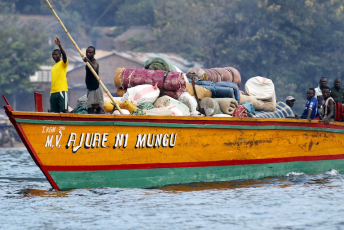High production costs and the mismanagement of factories have led to a drop in sugar production in Kenya over the past two decades, opening the door for smugglers. This ‘sweet secret’ occurs through Kenya’s porous international borders with Uganda (Busia, Lwakhakha, and Sio Port), Tanzania (Sirare and Namanga), Ethiopia (Moyale), and Somalia (Mandera). In 2020, sugar made up 48% of the goods smuggled into the country, according to the National Crime Research Centre.
In western Kenya, sugar smuggling is perpetrated by sugar cartels operating along the Kenya-Uganda border. Kenyan criminals collude with Ugandan factory workers who smuggle sugar and sell it to Kenyans along the border areas. Bags of sugar from the Kamuli and Kakira factories in Uganda are continually ferried into Kenya.
Large-scale traders use trucks while small-scale traders rely on smaller vehicles to ferry illegal sugar into the country through uncontrolled border points in the Marachi estate of Busia town. The number of bags smuggled during each trip depends on the size of the vehicle used: bicycle boda boda carry five 50 kg sacks, motorcycle boda boda carry 10, and vans can haul between 22 and 35 sacks.
Once in Kenya, the sugar is repackaged into different sacks and smaller packages from local sugar factories to evade the payment of taxes and to facilitate easy marketing in supermarkets. A local resident, Charles Oluoch, told ENACT that there are warehouses in Busia and Malaba where smuggled Ugandan sugar is repackaged and released onto the Kenyan market. This illicit sugar has not been certified by the Kenya Bureau of Standards as fit for human consumption and may, with additives, be harmful.
Peter Karanja, Deputy County commissioner of Teso North Sub-County, told ENACT that state actors in the smuggling value chain also facilitate the transportation of illegal sugar along Kenya’s highways. Kenyan smugglers buy sugar in Uganda for US$41 per 50 kg bag and sell it to Kenyan traders for US$50. Although Kenyan retailers could purchase a 50 kg bag of Kenyan sugar for US$45 from local manufacturers, local sugar is in short supply due to the collapse of local sugar factories.
Until the mid-1970s, Kenya’s sugar industry was booming, with 296 000 tonnes produced in 1976 against a domestic consumption of 253 000 tonnes. However, the sugar industry started to decline in the 1980s, creating a massive deficit between production and demand. In 2021 sugar production in Kenya is expected to reach only 650 000 tonnes against a domestic consumption of one million tonnes.
Several reasons could explain the crash in the local sugar industry. These include the high costs of production and inputs, mismanagement, and the huge debts incurred by sugar factories. The cost of production in Kenya is said to be 60% higher than in Uganda. The decline in the production capacities of the local sugar industry, policy failures by the government to revive the industry, and rising consumer demands in Kenya have thus created ideal conditions for this sugar smuggling network. The result is a loss in government revenue among many state-owned sugar factories. There have been cases where smuggled sugar has been confiscated and smugglers along the Kenya-Uganda border have been prosecuted, but this has not deterred criminals.
Tackling sugar smuggling into Kenya therefore calls for a multi-agency approach. This includes forming investigative and enforcement teams from the Kenya Revenue Authority, National Intelligence Service, the Directorate of Criminal Investigations, and the police to work together to stem the networks and actors that facilitate this crime.
Lower taxation could also be an incentive to enhance the capacity of sugar factories to produce cheaply while lowering the retail price of sugar for the local consumer. A multi-agency approach by Kenya’s government to curtail sugar smuggling and protect the country from the influx of illegal sugar is imperative to making the smugglers’ rewards less sweet.
Willis Okumu, Senior Researcher, ENACT Programme, ISS Nairobi








